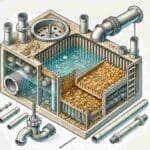Category Archives: Useful Tips
Five Steps to Finding Your Ideal Videographer
When it comes to creating content, video is the king. Although professional video production seems like a hefty expense for your business, the return is often greater than the investment. It enhances your company’s brand, content that engages and informs customers, and a comfortable set of experiences.
Why Choose A Professional Videographer?
Professional videographers are experts in creating relevant and appropriate videos according to the topic, scene, sound, and words. Professional, customized, and perfect videos receive maximum reach and videos. A professional videographer in Pittsburgh has an expert team who makes good quality videos that have a long-lasting effect on the target audience.
They have sound knowledge about displaying different types of videos, including client presentations, short films, advertisements, and corporate and training videos. Modern technologies offer suitable sound devices and tuning from the professional video production house.
How To Find An Ideal Videographer?
You can narrow the search by looking into various sources, including websites and companies. These include:
Personal Recommendations
You can ask your personal and professional network. Whether you ask your neighbor who hired a professional videographer or a friend running their business, they know people you do not know. Feel free to go to different people in your network with at least three options. After this, evaluate the videographers and pick the best one.
Social Media Platforms
Social media is an excellent source of finding quality talent. Besides having a pool of content creators available on a single platform, you also get to see the professionals’ work in real-time. You can also search for videography, editing, and your niche’s hashtags. It helps in narrowing down the prospects and following their pages and accounts.
Marketing Agency
If you are in a dilemma of choosing the best videographer in Pittsburgh, it is best to consider hiring a marketing agency. These agencies give attention to your content and offer a vast experience with creating emotional content to which your target audience can respond. When it comes to a video’s vision, execution, and final product, the professionals will never steer you in the wrong direction. Marketing agencies guarantee you a human resource department, up-to-date equipment, and employees with an excellent record of accomplishment.
Media Departments at Universities
Although the students studying media at a university are underrated, often they are the perfect hire for all the video work. Hiring students from the media department have several positives. The students are well educated, have hands-on training, and have access to all the necessary equipment.
Freelance Websites
It is another excellent option to hire professional and well-experienced videographers. A freelance website connects people with businesses looking for professionals for their short-time services. People working on freelance websites upload their portfolios and want firms and individuals to hire them.
Experimenting with these many options are excellent ways to figure out things that work for your business. You can also use a combination of these methods to find the best videographer.
The Different Uses of Paper Bags
Paper bags have been increasingly finding affinity from environment lovers for ages. However, their recent stylish and solid avatar is bringing them closer to others too.
Paper bags are eco-friendly. They are a super alternative for plastic waste. But are paper bags limited to only carrying groceries to home? Well not. Paper bag manufacturers are making bags in such a wide variety and superior quality that we must reuse them for various purposes.
If you have a good collection of paper bags at home and wondering what you can do with them, here we share their different uses.
Gift wraps: Paper bags make excellent gift wraps. Plus, they are eco-friendly options that replace synthetic and unbiodegradable plastic gift wraps. Next time, add a go-green touch to your gifting by wrapping it in a quirky paper bag.
Party serving: Paper bags can serve as party serving sets. Popcorn, chips, tortillas, and cookies look appealing when served in paper bags. Don’t miss this idea to add a unique touch to your weekend party!
Packing of delicate items: Packing glass items and fragile things? Use paper bags on their sides as support and shock absorbers.
As book covers: Cover books using paper bags to use them in the best way. They add a beautiful look to your bookshelf besides protecting them from wear and tear.
Kids arts and crafts: Engage kids with paper bags. Teach them how to make arts, drawings, paintings, crafts, sticking, origami, and many more from paper bags. Paper bags are child-friendly, and hence you have no such thing as toxic in their playtime.
DIY: There is no dearth of ideas for what you can do out of paper bags. A quick peek into the online resources will give you eureka moments and unleash your creativity to make pen stands, wall décor, hanging items, desk décor, and many more recyclable items from paper bags.
Style accessories: Paper bags are easily reusable for shopping many times. Make sure to fold them properly and store them in a dry place. Carry them for next time shopping and voila! Your eco-friendly style accessory, i.e., the shopping bag is ready.
Branding: Paper bags are one of the best channels to boost your branding. Whether focusing on personal branding or corporate branding, make sure you carry a paper bag with a quote or a pic that reflects your brand needs.
Return Gifting: Paper bags make fabulous return gift packages. You can make return gift covers in your desired size or use them as they are for return gifting. Either way, you are reusing them in an eco-friendly way.
To ripe fruits: Paper bags seal the ethylene and absorb the moisture released from fruits. Thus, they naturally ripen them without the usage of any chemicals. To use paper bags for fruit ripening, but one type of fruit in a paper bag, fold the bag and close the opening. Let the fruit sit for a day or two, and there you go! You have a naturally ripen fruit with you. Make sure not to put two or more types of fruits in one paper bag at a time, as the number of ethylene releases may vary from fruit to fruit, and this may result in their un-uniform ripening.
Mirror cleaning: Paper bags can make mirrors sparkling. Instead of using harsh scrubbers and chemicals, use normal detergent water and paper bags to clean mirrors.
Submit them in recycling centers: If you do not know what to do with torn or unusable paper bags, store them in a dry place and submit them to a recycling center. It is the best way to prevent them from ending in the dump and protect natural resources from your side.
Conclusion
Thanks to the creativity of paper bag manufacturers, today, we find them in various colors, prints, and sturdy quality ones. Reusing them is the best way to conserve natural resources and prolong the life of paper bags. So, what are you doing with your paper bags? We are curious to know. Please share in your comments.
Explainer Videos? Why You Need One!
The internet today is flooded with video content and is a large contributor to overall internet traffic. The popularity of these videos can be attributed to their ability to attract the audience and explain complex topics simply and effectively.
Explainer videos, as the name suggests, help in explaining something about your company or product in a fun and engaging way. The video could be about the company mission and core values or process and instruction to use the product. These short informative videos can attract user attention and are of immense value from a marketing perspective.
In the digital era, explainer videos have become a necessity for your overall marketing efforts. Let us discuss a few reasons why you need explainer videos.
1. They attract the right audience.
People on the internet have a very short attention span. They are less likely to read paragraphs of text about your company and product. The visually attractive features of Videos are an engaging medium for communicating and interacting with your audience.
Also, they are more persuasive and can compel the audience to take the desired action. A well-produced explainer video attracts your audience and retains them for a longer duration.
Information conveyed through the audio-visual medium is easier to digest and has a high retention value. Explainer videos include a voice-over, background music, and strong visuals that help in creating an emotional experience for your audience. Hence, these videos are quintessential to forming a meaningful relationship with your audience.
2. It increases website traffic.
The success of your online site depends on your SEO ranking and web traffic. Search engines love video content, and if the video provides value to the customers, it is more likely to appear at the top of search results.
Explainer videos can hold viewers’ attention for a longer duration and increase the average time spent on your website. These videos can also be shared across multiple platforms which increases your brand reach as more and more people become aware of your company.
Having a high-quality explainer video embedded in your page can increase the organic traffic on your site. Also, having valuable content on the site attracts the right audience that is more likely to buy your product if they can find value in it.
3. It offers a return on investment
Compared to other marketing tools, explainer videos have a high return on investment. Producing an explainer video may be slightly expensive. However, the return generated in terms of high traffic, SEO ranking, and conversion rate pays for itself in the long run. Hence, explainer videos are a cost-effective investment for your business.
4. It has a higher conversion rate
People are more likely to buy a product when they see its uses in action, and explainer videos do exactly that. Also, some complex products like software, electronics, mobile apps, specialized equipment, etc., require detailed explanation to understand their intended use.
An explainer video demonstrates real-life problems and how using the product can solve such issues. Moreover, it includes detailed instructions about product usage to ensure safe and effective usage. Hence, having an explainer video on your site helps in converting your audience into loyal customers.
5. It helps in explaining complex topics easily.
Explainer videos are a great tool to explain complex topics to your customers. People are less likely to go through text on your website to learn about your company, core values, and services. However, impactful explainer videos can do the job in seconds.
It presents the information in a fun and engaging way. Using creative and exciting images and characters, you can make your audience understand the importance of your product and how it can make their life better.
These are some of the reasons that make explainer videos a necessity for fostering business growth and success.
Four Simple Tips to Consider Before Your Next Gold Bar Purchase
We all understand the importance of investing money in high-value risk-free assets, and we all aim to receive consistent growth in such value. Unfortunately, the value of assets fluctuates due to numerous market conditions both in the country and worldwide. An investment in assets can either stabilize your income or ruin your savings.
However, there is one such asset that is not only a valuable investment but also has proven to rise in value consistently despite the market condition. Gold bar purchases provide you with a safe investment opportunity. It’s not completely risk-free but the volatility is less likely to impact you negatively and ruin your wealth.
However, purchasing bars of gold is more complex than it seems. With so many sellers in the industry, you are bound to get confused about your investment strategy.
Let us discuss a few tips that you should consider before your next gold bar purchase.
1. Check the purity of gold
The purity of gold is an important determinant that should be considered before you make a purchase. It is measured in Karats, with 24 karat gold being the purest form. It contains 24 parts gold with little impurities.
The widely purchased 22 karat gold contains 22 parts gold, with 2 parts of other metal. Similarly, 18 karat gold has 18 parts gold and 6 parts of other metals.
The purity of gold determines its value. Hence, you should be aware of the purity of gold bars.
2. Get the best price
Another important consideration when choosing bars of gold for sale is their price. As we discussed earlier, the purity of gold determines its price. However, different sellers may provide you with different quotes.
This is because when you purchase gold bars, you pay a premium over and above the value of the precious metal. Different retailers may charge different premiums. Also, depending on their source of gold, the price of gold itself may differ.
In most cases, the premium per ounce reduces as the weight of the gold bar increases. Hence, investing in the maximum-weight gold bars can help you save some premium on them. However, you should also keep your budget in mind so that you can hold your investment to receive the best value.
3. Check certification
There are numerous sellers in the market offering bars of gold for sale. However, it’s not uncommon to see retailers engaging in fraudulent activities and selling off fake products in the market. Hence, to ensure the safety of your investment, you need to check the certification of gold bars.
The gold bars should have hallmarks depending on the guidelines of the Federal Trade Commission and other authorities. Also, the certification should vouch for the purity, weight, authenticity, and other characteristics that impact its value.
The certification also ensures that you can resell or exchange your gold bars as and when the need arises.
4. Ask for an invoice
Any sale transaction needs an invoice to ensure its legality and authenticity. Bars of Gold for Sale is no different. Whenever you purchase gold bars, you should always ask the sellers for an invoice.
The invoice should contain a list of every item you have purchased, its quantity, and cost. Also, it should specifically mention the purity and weight of the gold bars.
The making cost, taxes, and other charges should be specifically mentioned in your bill. Having an invoice helps you in proving the ownership of gold bars in case of a dispute. Also, it is helpful at the time of resale.
These are some of the tips to help you in your next gold bar purchase. To ensure the safety of your investment, you should always purchase your gold bars from a reputed and renowned seller.
Also, a little market research can help you in mitigating risks when choosing Bars of Gold for Sale.
Hood Cleaning: What Every Restaurant Needs to Know
Every restaurant strives to create the best experience for their patrons, but it is a tough business. Margins are tight and running lean is important. Is cutting back on hood cleaning the way to go? Absolutely not. Without commercial hood cleaners performing routine and specialized maintenance, you risk the very business you are striving to protect.
Why Call in Commercial Hood Cleaners?
Fire is a major risk
Range hoods help keep grease, odors, and fumes out of the kitchen. Since grease builds up on the filters, neglecting regular maintenance from commercial hood cleaners means increasing the risk of fire. Cooking equipment is the biggest fire risk in any kitchen environment. Failure to clean the hood means failure to keep your team and your dinner guests safe. Reduce the risk of grease fires by ensuring that the kitchen hoods are kept clean and well-maintained.
Let’s Clear the Air
The hood also plays a big role in indoor air quality. A dirty hood and clogged up filters lowers the air quality for your workers, and that air can also escape into the dining room and affect your guests. Any restaurant that suffers from poor indoor air quality is not a restaurant that will stand out among its competition. Even if the food is wonderful, it is the entire experience on site – and the happiness of the team preparing the food – that make all the difference in this tough market.
Failing Inspections
Restaurant owners expect unannounced visits from food and safety inspectors – which is another reason to have commercial hood cleaners performing regular cleanings. A dirty range hood with a buildup of grease and bad odors wafting out of the kitchen will not sit well will with the inspector; any fines or closures affect more than your bottom line. They also affect your reputation.
Save Money by Planning Ahead
It costs more to re-open after a fire or forced closure than it does to ensure the kitchen hood is properly cleaned. Restaurant life is busy, so instead of letting this slip the mind, work with commercial hood cleaners that will assess how often you need regular maintenance. This will differ by restaurant type. Any place based on fast food tends to have more grease (from fries, chicken tenders, etc.). These hoods need cleaning more often than a place that does little to no frying or hot stovetop work. The right commercial hood cleaners understand that there is no “one size fits all” schedule and will, instead, take the time to get to know you, your business, and your menu and then help you set up a schedule accordingly.
What to Expect from Commercial Hood Cleaners?
Commercial hood cleaners do more than just clean the hood. Restaurant owners should expect a full service that includes the hood, plenum, duct risers, filtration system, all the filters, the grease boxes, the surrounding kitchen equipment (if connected or applicable) the exhaust fan and fan systems and the ducts connected to the system. Some cleaners will also wipe down affected kitchen equipment and wash the ceiling around the hood, too.
The Benefits of a Well-Rounded Commercial Hood Cleaning Company
The range hood is not the only area of your restaurant that should be on a regular cleaning and maintenance cycle. Save time and money by working with a well-rounded commercial hood cleaning company – one that will also address indoor air quality and has resources for air duct cleaning and maintenance, emergency services (fire, mold, biohazard cleanup and restoration) and demolition. Having one trusted, well-known team to handle all your indoor air quality, commercial hood cleaning and emergency service needs means peace of mind and a better experience for everyone on your premises.
Commercial Hood Cleaners – and So Much More…
In this day and age of the pandemic when cleanliness and indoor air quality are more important than ever, work with commercial hood cleaners that can do it all, from regular maintenance to getting your restaurant safe to reopen if a COVID case was reported on site, to helping with indoor air quality, and more. The time and effort spent on setting up the service now means savings later – for your bottom line and your restaurant’s reputation.











